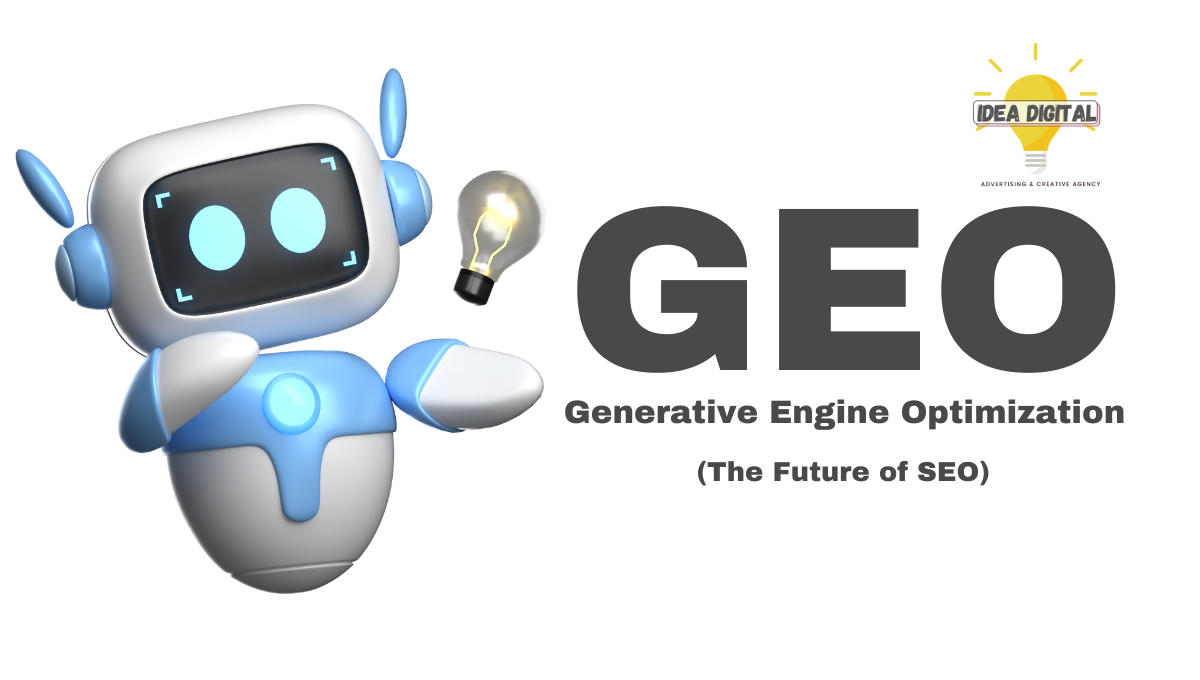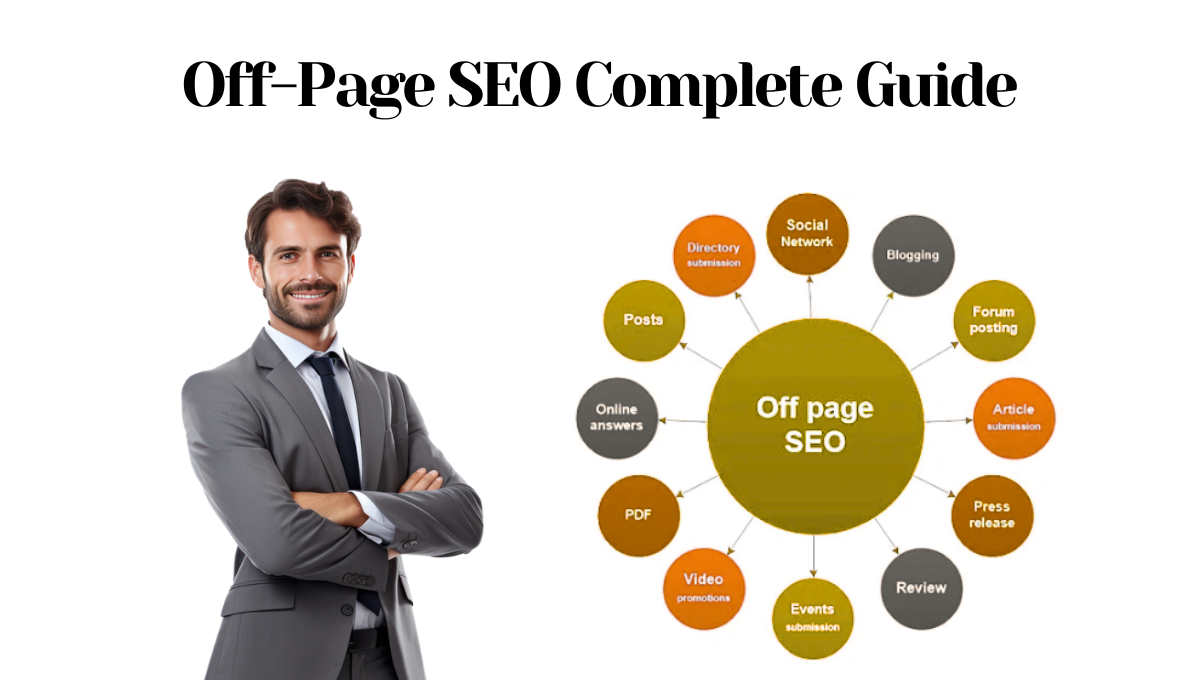You need to use new technologies that make your content more visible and interesting if you want to stay ahead in the fast-paced world of digital marketing. 87% of marketers think that AI-driven optimization will be very important for SEO strategies in the future. Generative Engine Optimisation (GEO) is one of the most cutting-edge ideas in this area. It combines AI and SEO strategies to make content easier to find and more useful to users. As we enter the era of Artificial Intelligence (AI), optimizing for generative engines has changed the way businesses think about digital visibility.
But what exactly is GEO, and how can you best use its power? This blog will talk about what GEO is, how it is different from regular SEO, and how you can use machine learning and SEO together to make your content better. This guide has everything you need to know, whether you’re a business owner, a digital marketer, or someone who wants to get certified in Generative Engine Optimization.
Introduction to GEO: Why It Matters in the AI Age
Generative Engine Optimisation (GEO) is a new idea that aims to improve content for generative AI engines such as Google BERT, Jasper, and ChatGPT. These AI-powered engines use machine learning and advanced algorithms to understand and create content. This makes search results more relevant and encourages users to interact with them more.
As search engines get smarter every day, old-fashioned SEO techniques might not work anymore. Keywords, meta tags, and backlinks were the main things that SEO was about. Now, AI-powered engines are more concerned with contextual relevance, semantic search, and user intent.
GEO is important because AI-based engines put the quality, relevance, and user experience of a site above all else. This means that if you follow the GEO rules to make your content better, it could have a big effect on how well your website or content ranks in AI-powered search engines.
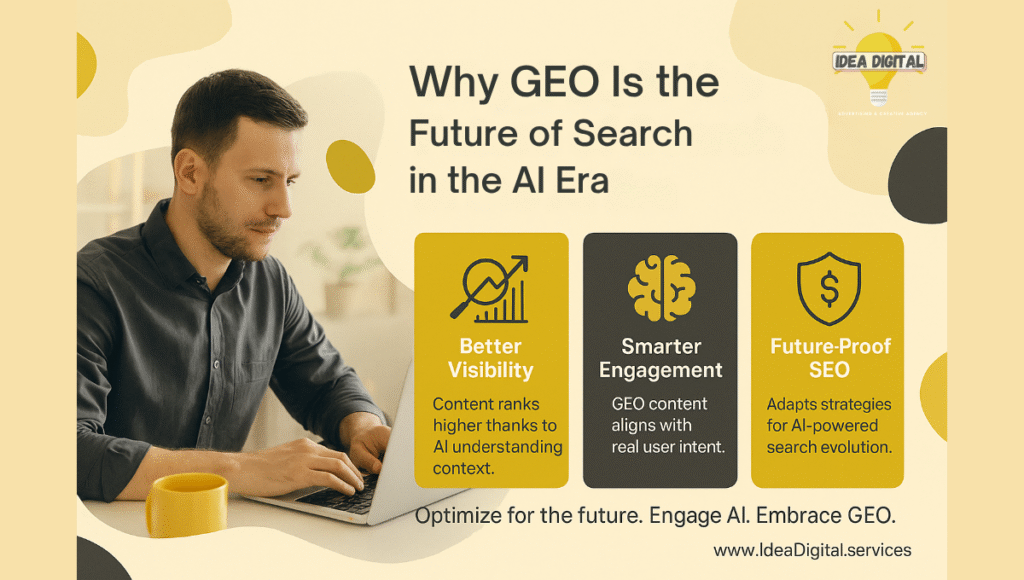
Benefits of Utilizing Generative Engine Optimization (GEO)
Generative Engine Optimization (GEO) main benefits are:
- Better Content Visibility: AI engines can better understand the context of content, which makes it more likely to show up in searches that are relevant.
- Better User Engagement: GEO creates content that meets the needs of the searcher by focusing on what they want and what they’re looking for.
- Future-Proofing SEO Strategies: Adding GEO to your business’s digital marketing plan gets it ready for the next stage as AI continues to change. This is how to future-proof your SEO strategies.
The Origins of GEO: From Academic Concept to Marketing Must-Do
Generative Engine Optimisation (GEO) is a research category into machine learning and AI. Initially, AI was mostly applied in automatic activities and data observation. But with the creation of more powerful versions, e.g., GPT-3 and BERT among other generative AI-based algorithms, the way machines generate and understand content changed.
Generative engines are now able to produce content depending on the desires of the user. They are able to do that not only by understanding what the user wants and the keywords but, also by understanding the context under which the material is under usage. Due to this marketers and search engine optimization professionals were forced to devise new strategies where they incorporated the utilization of machine learning in their SEO practice.
GEO started as an academic concept of AI research, and has become a thing that marketers cannot avoid doing. This trend is one that no company can afford to dismiss in its quest to retain its rankings as search engines increasingly turn towards AI-powered algorithms.
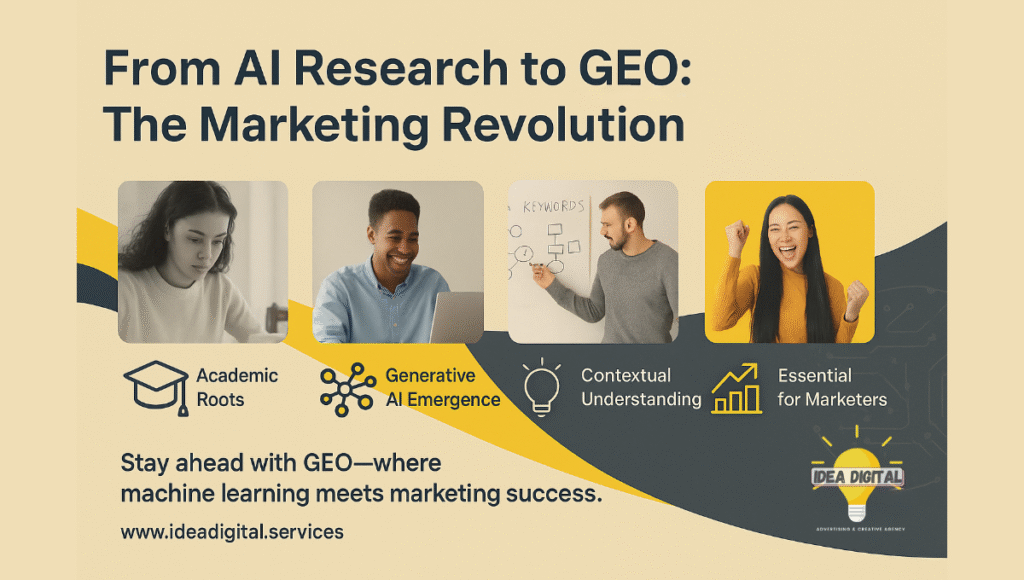
How Generative Engines Differ from Traditional Search Engines
Search engines like Google have always used algorithms to match and rank keywords in order to show search results. They check things like backlinks, the quality of the content, and on-page SEO to see how relevant something is.
Generative engines, like Google’s BERT or GPT models, do more than that. These engines can understand what words and phrases mean, not just find keywords. They do this by looking at the context, intent, and semantics of a sentence or phrase. A generative engine will know that someone who types “buy shoes” into a search engine is probably looking for online stores or sales and will change the results to fit that person’s needs. The key differences:
- Traditional Search Engines: Backlinks and keywords are what traditional search engines look for.
- Generative Engines: Keep in mind the user’s needs, context, and meaning.
This means that businesses need to do more than just put GEO keywords in their content here and there. They also need to make sure that the content they make is useful to users.
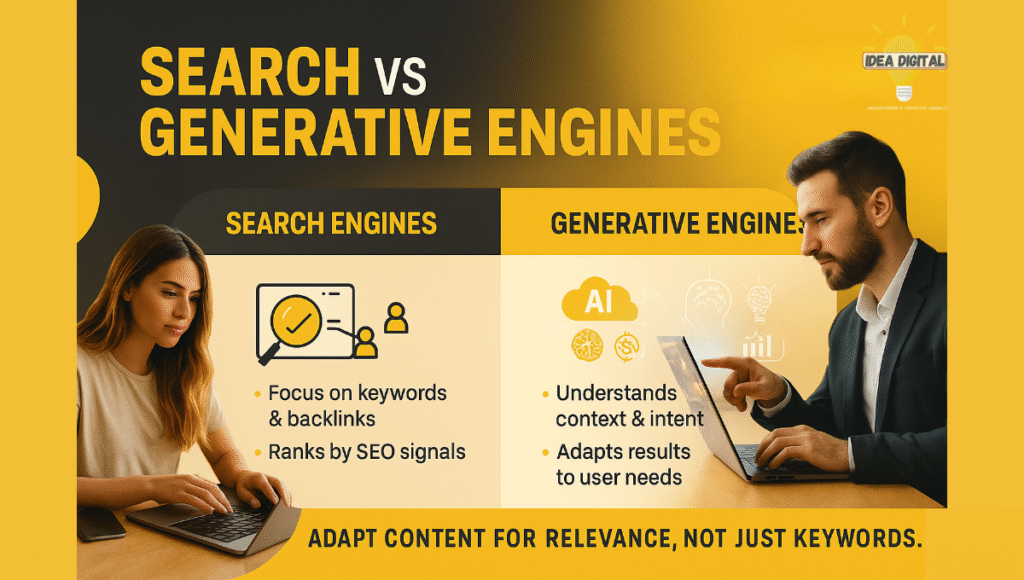
Core GEO Strategies to Optimize Content for AI Engines
If businesses want to do well with Generative Engine Optimisation, they need to change how they think about content. Here are some simple things you can do to make GEO work better for you:
- Focus on high-quality, relevant content: Generative engines like content that adds value and context. This means that you need to know a lot about the subjects and write articles that are well-researched, useful, and what users want.
- Use Semantics and Structured Data: Structured data, such as schema markup, makes it easier for generative engines to understand the content and its context. Use semantic keywords that really get to the heart of the subject instead of just exact match keywords.
- Local SEO and Geo Keywords: Geo keywords are very important for local businesses to use to make their content better. These keywords include location-based terms that help AI engines find your content when people search for local goods or services.
- Use AI and machine learning to your advantage: Use AI tools and models to see how well your content is doing, come up with better keyword strategies, and make predictions about what will happen in the future. You can use machine learning to find out more about how people behave and change your content strategy based on what you find out.
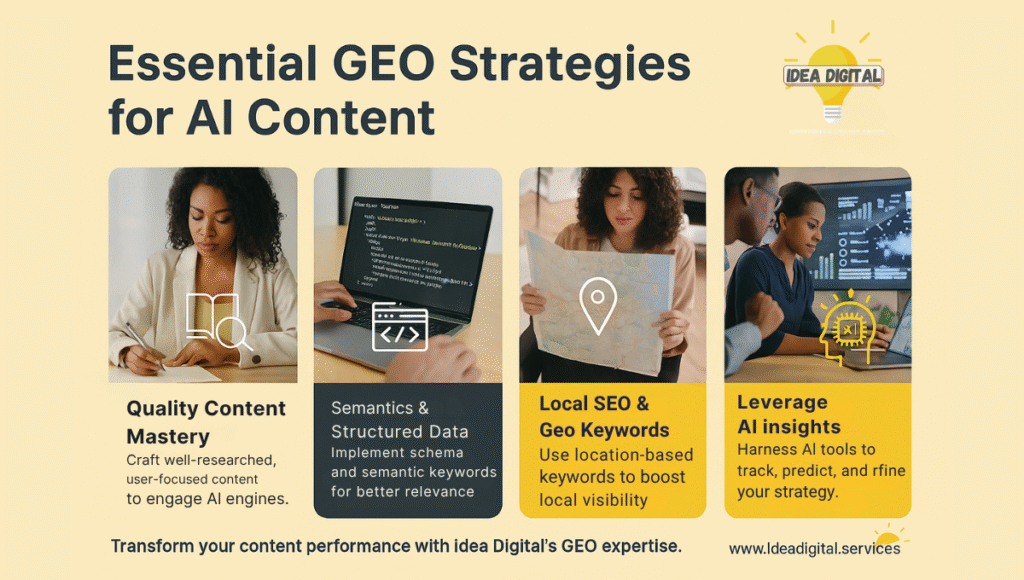
5. Tactical Implementation: 6 Key Steps for GEO Success
For Generative Engine Optimisation to work, businesses need to use GEO strategies the right way. To improve your content, you need to do these six important things:
- Do a GEO Audit: Check out your current content and see how you can make it better for AI engines.
- Use Semantic SEO: Don’t just look at keywords; also look at geo hints and context.
- Make Full Content: Write content that gives users all the information they need and is useful.
- Make it easier for voice search: Use natural language to make sure your content works with voice search since many generative engines are voice-based.
- Check the Performance: Use analytics tools to find out how well your content works with generative engines.
- Refine and Change: Change your content often based on new information from machine learning and SEO.
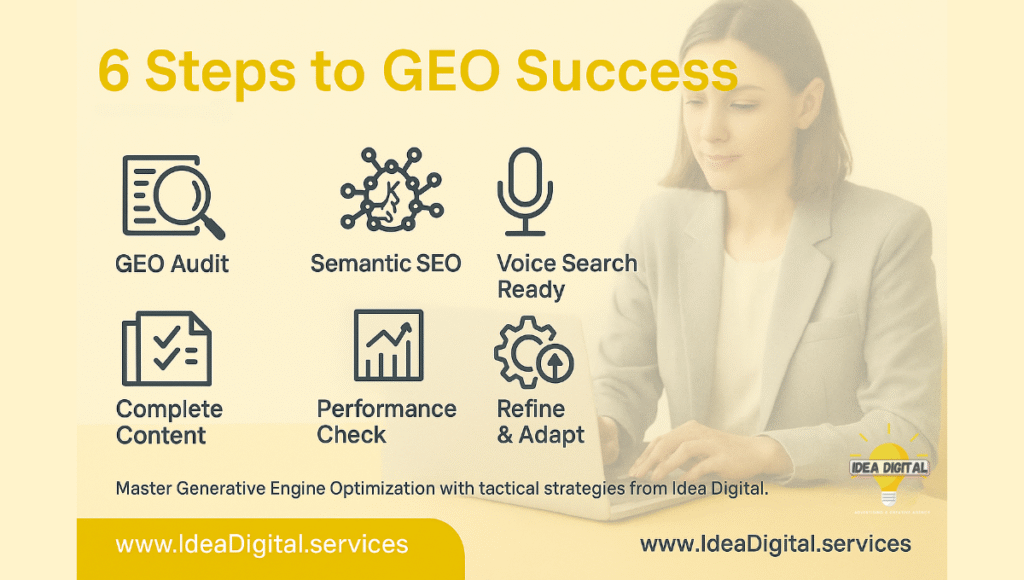
6. Challenges & Ethical Considerations in GEO
There are thrilling opportunities and daunting issues, and ethical concerns to consider in GEO. Bias in AI is one of the greatest concerns. In some cases, even the biases in reference data propagating in AI systems, such as generative engines, can make them even more disadvantaged.
The second concern is that of ensuring authenticity of content. With the growing popularity of generative engines, the content coming through them may be so generic and deprived of any creativity and original idea. In relation to GEO, other ethical considerations are ensuring that the content optimisation process is transparent and open to criticism, particularly when AI plays a bigger role in content creation.
7. Measuring GEO Success: Metrics & Analytics
To find out how well your Generative Engine Optimisation strategy is working, you need to look at key performance indicators. You can use GEO digital marketing tools to find out how well your content is doing and where you can improve it. Here are some things to watch out for:
- Organic Traffic Growth: See how much more traffic generative engines are sending your way.
- Metrics for Engagement: Keep track of how people interact with your content, such as how long they spend on it and how many times they share it.
- AI Engines Ranking: Check to see how well your site does on AI-driven engines like GPT and BERT.
- Conversion Rate: Check to see how many of your visitors become customers.
The Future of GEO & AI-Driven Search
As SEO moves towards combining AI, content production, and digital marketing, GEO creation is a crucial component. Businesses need to keep up with the latest developments in AI tools and modify their approaches to make sure their content is optimised for the upcoming AI-powered search engines.
AI and machine learning are key components of Generative Engine Optimization’s (GEO) future. Traditional SEO tactics that only use keywords will become less effective as generative engines advance because they will be able to comprehend user intent and context better. Businesses will need to concentrate on GEO tactics that improve content relevance and context and produce content that complies with AI’s changing algorithms if they want to remain competitive.
Businesses must integrate AI-driven insights into their SEO and content strategies to stay ahead of the curve and future-proof their digital marketing initiatives. As generative engines develop further, this evolution guarantees that content will continue to be optimised for AI-driven search.

Conclusion: Launch Your GEO-Ready Content Strategy
Finally, Generative Engine Optimisation (GEO) is the upcoming thing in search engine optimization (SEO). GEO is going to transform the way companies enhance their content by utilizing AI and the conventional approach of SEO, complementary to each other. It creates very user-relevant content and concentrates on users. This not only suits the current search engines, but it also adds satisfaction to the user. The requirement of GEO keywords, geo hints, and AI-powered content strategy will increase as AI engines further improve.
Adding the generative engine optimisation services to your digital marketing strategy can also present a large advantage to you. The services mentioned will assist you in advancing in the ranks, index your material more easily, and request professional recommendations related to making it compatible with AI algorithms. It is a good thing that an individual who would like to become even more efficient in what he/she is doing to receive a Generative Engine Optimisation certification, to be able to acquire the necessary skills and knowledge that would keep them abreast of this ever-evolving field.
You should do more than ensure that your content strategy of GEO works alongside the existing search engines. You will also have to prepare your business for the competitive future of AI-driven search. It is the point where you should improve your content strategy and prepare your brand to be successful in the age of generative engines in the long run.
FAQ’s
How does GEO differ from normal SEO?
Generative Engine Optimisation (GEO) is less focused on targeting keywords, backlinks, and the technicalities of optimisation than traditional SEO is. The primary objectives of GEO are to understand what the search queries mean and come up with content that can be appealing to AI-driven engines. This involves creating high-quality, relevant material, semantic optimisation, and employing machine learning to be more visible across the outcomes in AI-based search.
What good can GEO do to businesses?
GEO makes companies remain competitive in the dynamic business of the digital marketing environment, get more user engagement and better ranks in the algorithm-based search engines. Optimising the content of business websites with users intention and relevancy, GEO allows the business to meet the content performance standards of the AI-based search engines, get higher organic traffic, and drive more conversions.
Do I have to work with a generative engine optimisation agency provided by GEO?
Even though it is possible to use the Generative Engine Optimisation (GEO), on its own, there may be some benefits of finding a GEO digital marketing agency. These companies will help in formulating a comprehensive GEO strategy that can supplement the interests of your company and specialise in the optimisation of content to be used by AI engines. They can use the newest AI technologies, be professional, and ensure that your content is on top of AI smart-searching.

